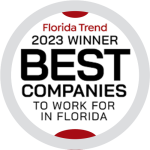For the first time since 2008, CIOs did not put budget and cost control on their Top 10 list of IT priorities. However, behind this seemingly good news, there is a conundrum wrapped in a bit of a riddle. Federal stimulus packages gave state and local governments the funds for numerous upgrades. So how do you implement those upgrades without disrupting the day-to-day business of government or adding massive amounts of payroll? This blog post will take a quick look at NASCIO’s 2022 CIO Top Priorities and see how they can dovetail with future-proof technology solutions that can be rapidly deployed and easily scaled.
Cybersecurity and Risk Management
Hackers from countries large and small, ransomware, malicious phone apps, and assumed ordinary websites injected with malicious code almost make the old days of devious MS Word macros feel quaint in comparison. Bad actors have reached a level of hyper-sophistication, and it is no surprise that cybersecurity and risk management are the top priority of CIOs everywhere.
As agencies grow, each new employee adds value — but they also become potential vectors for cyberattacks through tried-and-true social engineering tricks and all the tripwires of our connected world.
An efficient, cost-effective, and scalable solution is to move IT infrastructure to a managed cloud. Your employees access all their apps through SaaS, safely and securely, via Chromebooks and other devices configured for minimal vulnerabilities. Cloud-based IT includes robust firewall and application-layer security protection. Through outsourcing some of their critical infrastructures, many agencies benefit from top-tier security that would presumably be out of reach due to budget and talent constraints.
We are certified by the American Institute of Certified Public Accountants (AICPA) as a SOC Type-II organization. We routinely audit to ensure that we follow strict information security policies and procedures.
Digital Government / Digital Services
There’s no doubt that a sea of change is happening, and we’ve talked about how COVID has altered expectations. Citizens want their local and state governments to provide instant (or at least fast) access to information and services online. State laws are pushing agencies to make more information open to access. And just like workers in the private sector, government employees want to have the option to work semi-remotely.
Our services provide a full suite of solutions to help agencies become fully digital:
- Public portals streamline citizen access to information and build trust through greater transparency and faster service.
- Electronic forms, digital signature solutions, and intelligent document processing take the hassle out of document management and approvals.
- Robotic process automation handles boring and repetitive tasks so your employees can focus on higher-value work.
Cloud Services
As you have noticed, these state CIO priorities overlap because they all point to the digital future.
Moving to the cloud can save costs, reduce complexity related to software configuration, licensing, and permissions, increase security, and simplify data storage and backups.
But there is more than one type of cloud configuration. How do you choose? And how can you make a move while still taking care of business?
We know the ropes. Many agencies trust us as their managed cloud provider, and we abide by a cloud-first strategy, which means we can help you integrate onsite and cloud-based IT with a clear and efficient plan for scaling up or down as your business needs require.
Legacy Modernization
This IT priority on the Top 10 list comprises business process improvement and how to improve, or replace, legacy platforms. On the hardware side, old workstations, servers, network switches, routers, and various little boxes that haven’t updated firmware in years all fall into this bucket. Now add in all those specialized software programs that cobble together to get your work done thanks to your ingenuity, time, and money spent. And then, tied to everything else, are your workflows and processes.
Not sure where to start? A small first step might be to engage with specialists in process and task mining to define and document your business processes. Our experts use advanced tooling and industry best practices developed over 20+ years to identify all parts of the process, including the many exception paths. Then you can define business requirements and a project roadmap to achieve the business outcomes you are trying to drive. Not ready to take on a rip and replace? Implementing robotic process automation (RPA) to move data out of legacy closed systems is a powerful first step to augmenting and connecting a legacy system while working towards a larger replacement strategy. Ready to invest in extensible, low code platforms as a replacement? Get started with building a modern content services platform.
Identity and Access Management
It is critical for local and state agencies to verify the identity of citizens applying for public benefits and the level of benefits they are entitled to based on their household information. Solutions like our RPA-powered Identification Verification Process can help agencies meet demand and reduce errors.
In the office, and especially for remote employees, agencies must have robust access control and authentication processes to ensure systems are accessible yet safe and secure. We are experts in providing secure, authenticated access to cloud applications.
Workforce
With waves of early post-COVID retirements and more competition for talent across industries, government agencies face staffing shortages and difficulties in addressing skills gaps. Once again, IT will need to come to the rescue by facilitating remote work and putting technology-based solutions in place for repetitive tasks and process automation.
When we look ahead, we can see that the workforce of tomorrow will comprise talent from diverse resource pools and incorporate more profound human-machine pairings for solving problems and maximizing productivity. For government agencies, entirely new roles such as mobility platform manager, algorithm auditor, and exponential nurse will require a mix of analytic and interpersonal skills along with a level of comfort in configuring AI-powered technologies. Download our recent white paper to learn more about the future of work in government.
Consolidation / Optimization
Many CIOs feel like the pandemic forced their teams to implement band-aid solutions that are not sustainable. In these siloed, line-of-business applications, capabilities are duplicative and drive higher costs. This priority echoes the need to break down technology silos and adopt scalable, low/no-code platforms to drive adoption across the enterprise.
We work with various technology partners who have taken a cloud-based, scalable platform approach with low-code interfaces to drive business adoption and encourage citizen development. Our experienced professional services team conducts extensive user acceptance testing and delivers top-tier training. In addition, our technical support team provides the safety net when you need us to ensure confidence to continue to scale.
Conclusion
The Top 10 list remained primarily unchanged besides the absence of budget and cost control. Digital services remained in the No. 2 spot for the second year as people increasingly access government resources online. With this growing need to modernize and take services online, it is no surprise legacy modernization returned to the list in spot No. 5.
At MCCi, we have in-depth experience driving sustainable digital transformation and helping agencies accelerate their modernization efforts by acting as an extension of your technology team.
Contact us to discuss how any of the priorities above align with your organization’s needs.






